The Grand Ethiopian Renaissance Dam Gets Set to Open
The controversial dam is nearly done, but will drought and lack of grid infrastructure lessen its impact?
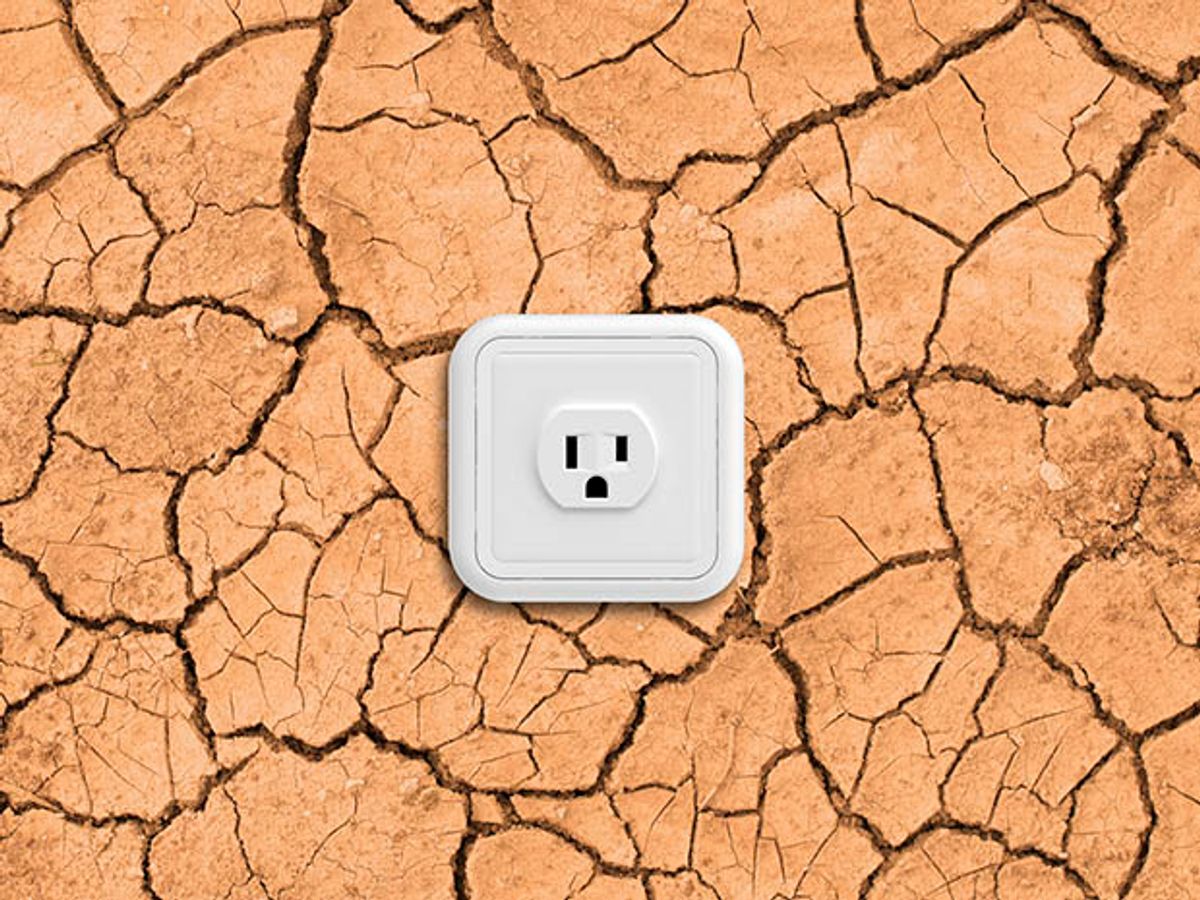
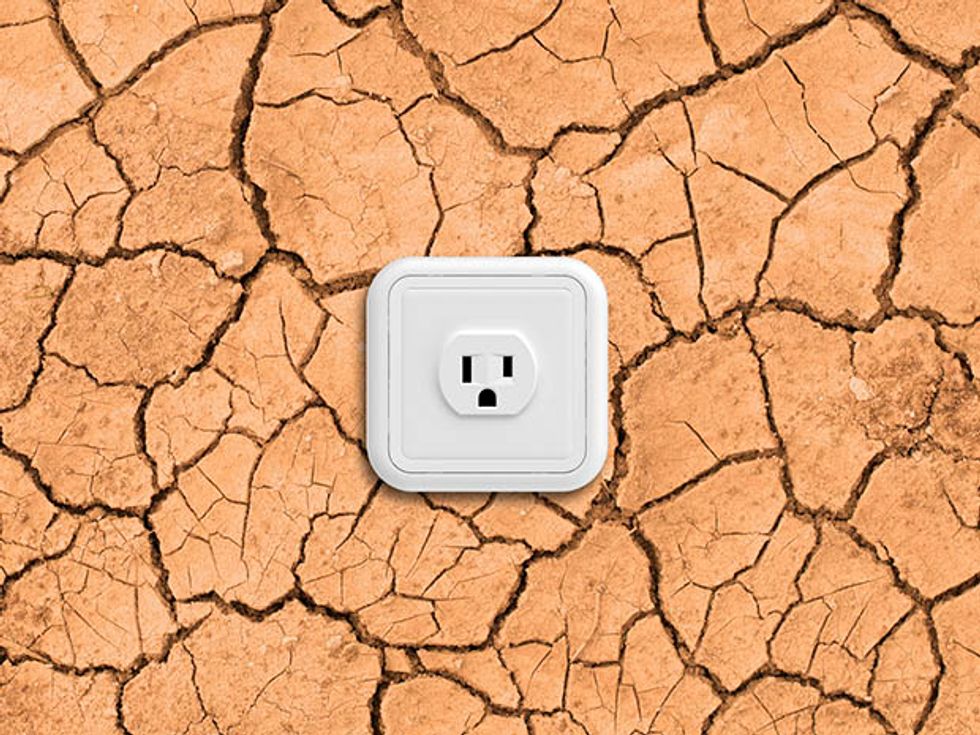
Construction of the 6,000-megawatt, US $5 billion Grand Ethiopian Renaissance Dam (GERD) began nearly six years ago and is now close to completion. Sometime in 2017, the dam, which sits on the Blue Nile near the border of Ethiopia and Sudan, will begin producing electricity. Meanwhile, its vast 74 billion-cubic-meter reservoir will start to fill, a process expected to take anywhere from five to 15 years.
Ethiopia badly needs it. Only about a quarter of its citizens have access to electricity. The country’s installed capacity is a dismal 3,200 MW, and the annual per capita electricity consumption is among the lowest in the world—65 kilowatt-hours in 2013, far below even the average of 488 kWh for sub-Saharan African countries and the world average of 3,104 kWh. Without electricity, the vast majority of Ethiopians rely on burning wood, dung, and other forms of biomass, and so deforestation and soil erosion has accelerated.
Given the country’s natural resources, there is no need for this impoverishment. According to energy experts, Ethiopia has the second highest hydropower potential in Africa, with an estimated capacity of about 45,000 MW. The GERD, as well as the 1,870-MW Gilgel Gibe III Dam completed in 2015, will nearly quadruple Ethiopia’s electricity capacity. Excess electricity will be exported to other African countries and even to Europe and could eventually earn Ethiopia about $1 billion per year, which would make it the largest electricity exporter in Africa.
Among the dam’s other expected benefits are a steadier flow of water through the dry season and less flooding in the rainy season. That regulating influence could be especially helpful as climate change makes East Africa’s rainfall more unpredictable.
But like all big hydropower projects these days, the dam has raised plenty of concerns. Sudan and Egypt, Ethiopia’s downstream neighbors, have understandably worried that the flow of the Blue Nile will be curtailed, particularly during the filling of the dam’s reservoir.
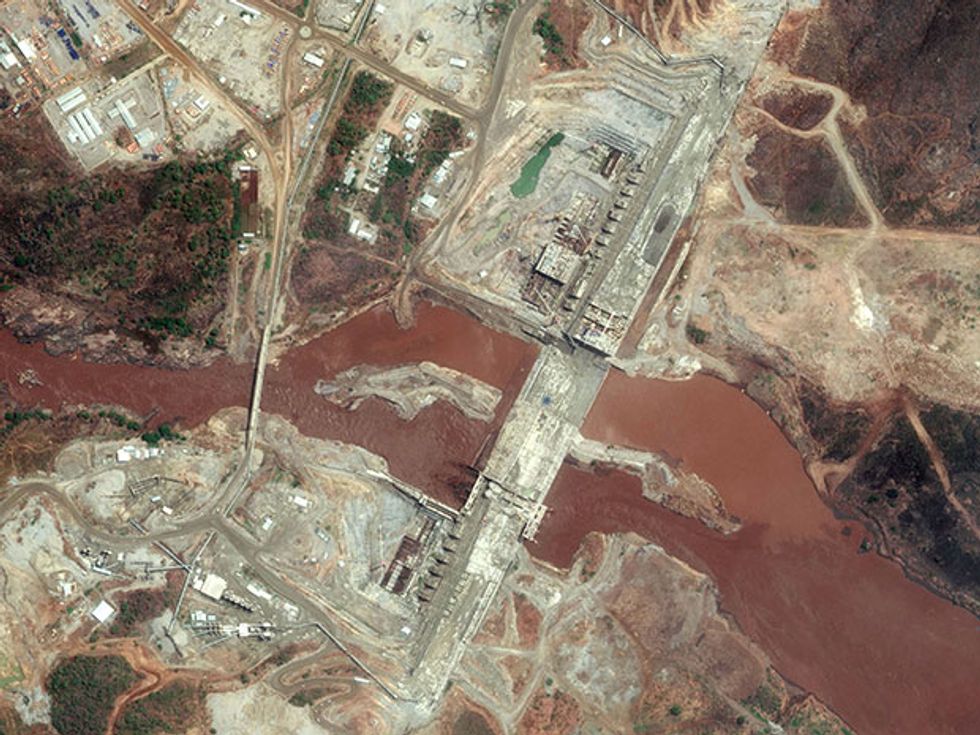
The Blue Nile is the larger of the two main tributaries of the Nile River, and both Egypt and Sudan rely on the river for irrigation as well as electricity. Sudan’s Roseires Dam and Sennar Dam on the Blue Nile, which together supply about 80 percent of the country’s power, and Egypt’s Aswan High Dam on the Nile could all be affected by what happens at GERD.
The Ethiopian government had originally proposed that the three countries jointly fund, operate, and own GERD. Indeed, the dam is so large that it could have easily replaced the other three dams. But according to Salman M. A. Salman, a Fellow with the International Water Resources Association, Sudan and Egypt ignored that proposal. When Ethiopia first announced the project in April 2011, Salman says, many people were skeptical that such a poor country could pull off something so ambitious. And yet the dam, which is being funded entirely by Ethiopia, is on track to be completed on time and within budget. Once this dam and several smaller ones are completed during the coming years, Salman says, “Ethiopia could well become the hydropower hub for East Africa.” Several countries have already agreed to buy electricity from Ethiopia, he notes.
For that to happen, the region’s electricity infrastructure will need significant improvements. Ethiopia’s grid is currently nowhere near large enough or robust enough to absorb even a doubling of capacity. Transmission and distribution networks do not exist in many parts of the country, nor are there sufficient high-voltage links to its neighbors to support electricity exports.
That situation should soon begin to change, however. The World Bank is funding the Eastern Electricity Highway Project, which includes a 500-kilovolt, 2,000-MW high-voltage direct-current transmission line between Ethiopia and Kenya, due to be completed in 2018. The Ethiopian government is investing heavily in its distribution networks as well. The Growth and Transformation Plan II, which prioritizes government spending, calls for the installation of nearly 22,000 km of distribution lines by 2020, compared with about 13,000 km in 2015.
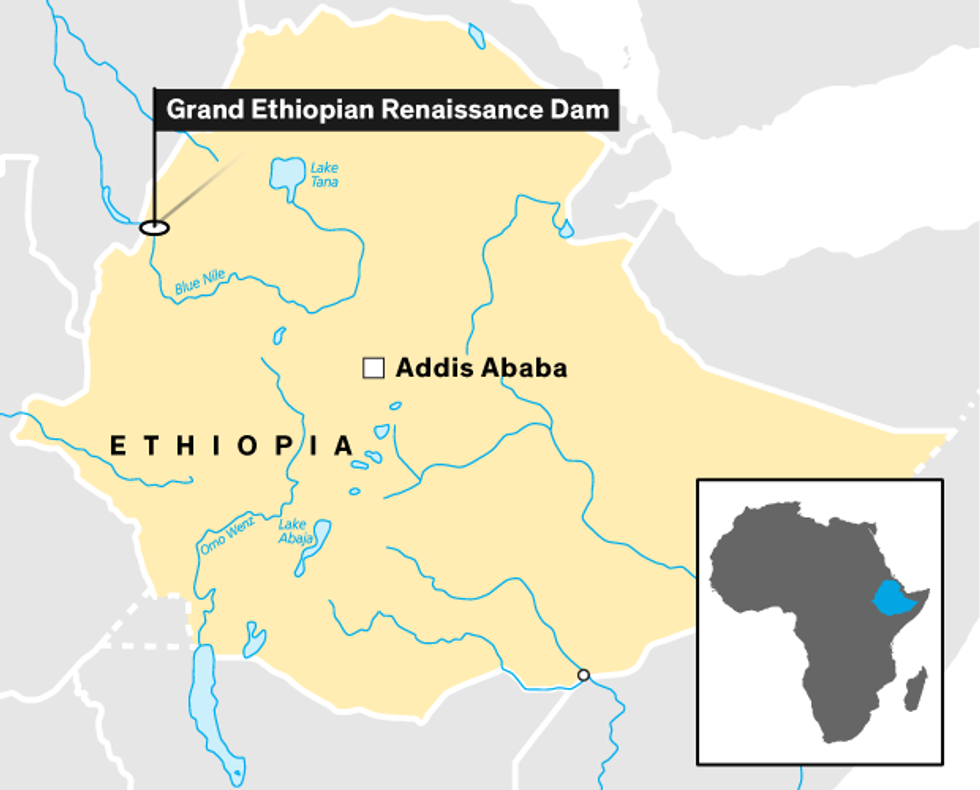
Just how much electricity the dam will produce is an open question. The rated capacity of 6,000 MW represents the dam’s peak output, says Asfaw Beyene, a professor of mechanical engineering and director of the Center for Renewable Energy and Energy Efficiency at San Diego State University. Most of the time, the river’s flow won’t be strong enough to allow the dam to generate that much electricity. “The Blue Nile is not a big river,” Beyene says. “It’s not even in the top 100 rivers in terms of average flow rate.”
Based on his calculations, 2,000 MW would have been a more reasonable rating for the dam. Back in the early 1960s, in fact, the U.S. Bureau of Reclamation had recommended building a “border dam” of about that size in the same location. But the border dam’s proposed reservoir was less than one-fifth of the GERD reservoir’s 74 billion cubic meters, and the dam itself was less than half as high as GERD’s 155 meters. Of course, building a large reservoir is one thing; filling it, and keeping it filled, is quite another. If the severe drought that devastated parts of Ethiopia in 2016 spreads to the region near the dam, the reservoir will fill very slowly indeed.
The proper sizing of the dam is more than just a numbers issue, Beyene adds. “Because the dam is oversized by 300 percent, the dam’s powerhouse as well as new transmission lines will also be oversized, which will greatly inflate construction costs.” He questions the fact that the prominent Italian company, Salini Impreglio, that is building the dam also did the feasibility study for the dam: “In the United States, that’s a no-no; it’s a clear conflict of interest.” Salini and the state utility, Ethiopian Electric Power, did not respond to several requests for interviews.
The price difference for the turbines alone could amount to $1 billion, Beyene estimates. That money could be better spent on other infrastructure, including facilities to exploit Ethiopia’s considerable wind, solar, and geothermal resources. But with construction of GERD nearly finished, there’s little chance of scaling back the project now. His hope is that any future projects on this scale will get more scrutiny. “Hopefully, the country will come together and things will change,” Beyene says.

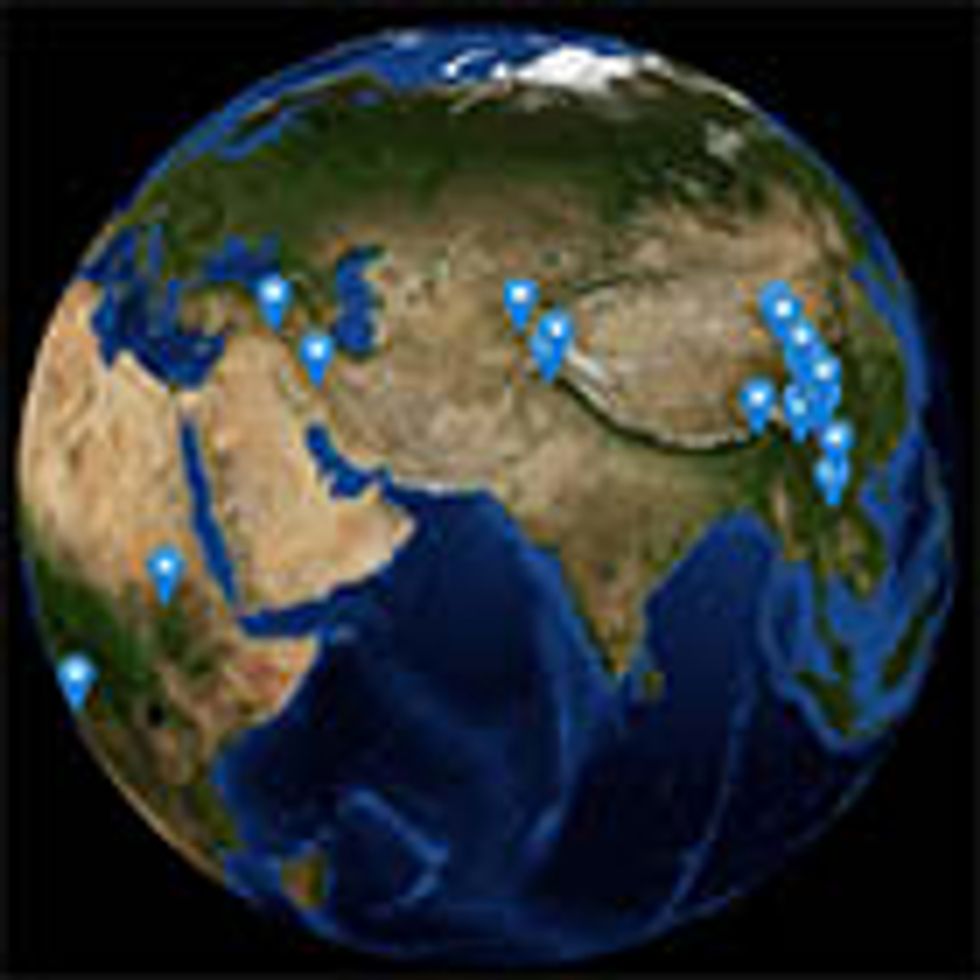 INTERACTIVE: Future Hydroelectrics
INTERACTIVE: Future Hydroelectrics

